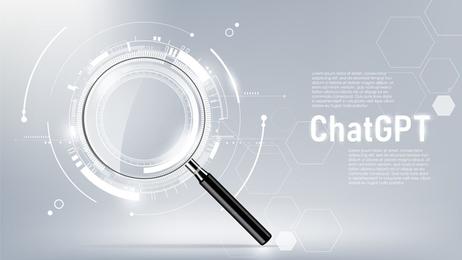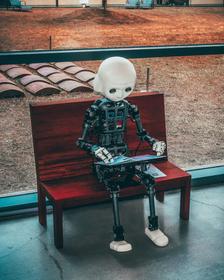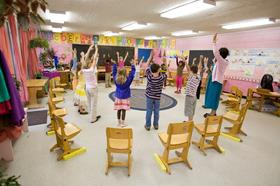Artificial Intelligence, specifically ChatGPT, is knocking on school doors everywhere. So, rather than let some reporter tell us about AI and ChatGPT, I asked ChatGPT to explain itself to you and me. Here are the questions I posed, followed by ChatGPT's answers, all of which I have put in blockquotes. The questions are mine. The answers are ChatGPT's.
What is AI?
Artificial Intelligence (AI) refers to the simulation of human intelligence in machines that are programmed to think and learn like humans. AI systems are able to perform tasks such as perception, problem-solving, decision-making, and language understanding. There are various subfields of AI, such as machine learning, computer vision, and natural language processing, which are used to create specialized AI systems that can perform specific tasks. AI has many practical applications, such as in self-driving cars, speech recognition, and image recognition.
What is ChatGPT?
ChatGPT is a large language model developed by OpenAI. It is based on the GPT (Generative Pre-training Transformer) architecture, which is a type of neural network designed for natural language processing tasks. ChatGPT is trained on a massive dataset of text from the internet and is able to generate human-like text in response to prompts. It can be fine-tuned for specific language tasks such as question answering, conversation, and text completion. ChatGPT has a wide range of potential uses, such as in chatbots, language translation, and content generation.
In this video, Adam Twarog explains ChatGPT.
Why was ChatGPT developed?
ChatGPT was developed by OpenAI to advance the state-of-the-art in natural language processing (NLP). NLP is a subfield of AI that focuses on the interaction between human language and computers. It is used in a wide range of applications, such as in chatbots, language translation, and text-to-speech systems.
The GPT architecture, which ChatGPT is based on, is a type of neural network that is designed to handle large amounts of data, and it was trained on a dataset of text from the internet. It was designed to be able to generate human-like text in response to prompts, which is an important aspect of natural language processing.
The main goal of the development of ChatGPT was to create a model that can generate human-like text and can be fine-tuned for various NLP tasks such as text completion, conversation, language translation and question answering. The developers hope that by making this technology available to researchers and developers, they can help to advance the field of NLP, and create new and innovative applications of the technology.
How can high school students use ChatGPT?
High school students can use ChatGPT in various ways, such as:
- Research assistance: ChatGPT can help students quickly find information on a wide range of topics. It can also assist in writing research papers by providing relevant information and helping to structure the paper.
- Language learning: ChatGPT can be used to practice language skills, such as conversation, translation and writing.
- Creative writing: Students can use ChatGPT to generate story ideas, plot twists, and character development.
- Essay writing: ChatGPT can assist in writing essays by providing relevant information, structuring ideas, and helping with grammar and punctuation.
- Homework help: ChatGPT can assist students in understanding difficult concepts and provide explanations.
It's important to note that while ChatGPT can be a useful tool for students to help them with their studies, it's not a substitute for learning and understanding the material. The students should always use their own judgment and critical thinking when using the information provided by ChatGPT, and also use it as a tool to supplement their own research and understanding of the topic.
This video from the Wall Street Journal reports on how students could cheat with ChatGPT.
Is it ethical to use ChatGPT to write my term paper for social studies?
It is generally considered unethical to submit work that is not your own as if it were. Additionally, using a language model like ChatGPT to write a term paper may not demonstrate the original thought and understanding of the topic that is expected in academic work. It would be more ethical to use ChatGPT as a tool to help you research and understand the topic, but not to generate the final product that you submit.
How can a teacher determine if ChatGPT has written a student's paper?
There are a few ways a teacher can determine if a student's paper was written by ChatGPT:
- Checking for plagiarism: Teachers can use plagiarism detection software to check if the paper matches any existing text on the internet.
- Spotting inconsistencies: If a paper contains information that is not consistent with the student's knowledge or level of understanding, it may be a sign that the paper was not written by the student.
- Identifying repetitive or formulaic language: If the paper contains repetitive phrases or formulaic language, it may be a sign that it was generated by a language model like ChatGPT.
- Asking the student: A teacher can ask the student directly how they wrote the paper, how they gathered information, and how they had done the research.
- Reviewing the student's previous work: If a teacher is familiar with the student's writing style and understanding of the topic, they can compare the paper in question with previous work completed by the student to identify any inconsistencies.
It's worth noting that a student might have used ChatGPT to assist with their research and writing, but not to generate the final product. Therefore, it's important for the teacher to keep an open mind, and not to assume that the use of AI model necessarily means that the work is not original.
As a parent and a teacher, I will impress upon my young people that ChatGPT is one of many tools they can use for research. However, each of us has a distinctive voice when we write. Our use of syntax, vocabulary, and literary expression is like our fingerprints: unique and distinctly ours. ChatGTP certainly can produce answers to our questions. But it writes those answers in a prose style that is bland and devoid of personality.
More importantly, don't pass off ChatGPT's answers as your own. It's OK to quote ChatGPT's answers to your questions, but correct attribution is essential. AI will continue to revolutionize every aspect of our lives. We must learn to use it wisely.
Questions? Contact us on Facebook. @privateschoolreview















